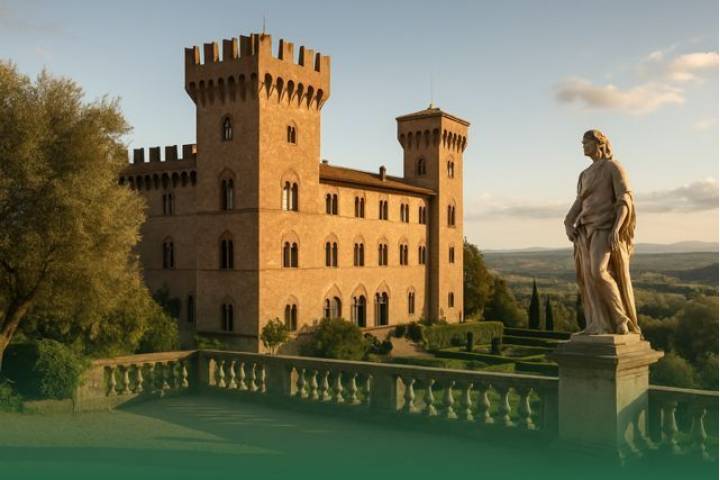Purchasing a historic and prestigious property means more than simply acquiring a valuable asset—it means becoming part of a centuries-old narrative where luxury, history, and uniqueness are inextricably intertwined. Castles, historic villas, and protected palazzi represent the richest and most exclusive heritage our country has to offer: true architectural treasures where every detail holds a story, prestige, and lasting value.
Today’s real estate market is increasingly oriented toward refinement and added value. In this context, these properties are attracting a growing number of high-net-worth individuals and investors, eager to combine a secure investment with the pleasure of owning a highly sought-after architectural masterpiece of great artistic significance.
Castles, Historic Villas, and Protected Palazzi: An Insight into the Treasures of Historic Architecture
Castles are highly valuable constructions that evoke admiration and awe, often surrounded by breathtaking landscapes that further enhance their natural beauty. These structures bear witness to centuries of history, while offering maximum privacy and expansive spaces with unparalleled charm—qualities much appreciated by those seeking luxury, exclusivity, and discretion.
Historic villas also play a prominent role in luxury real estate. Often set in prestigious natural contexts and enriched with centuries-old parks or Italian gardens, they offer refined spaces for exclusive events or simply serve as timeless private residences.
Finally, protected palazzi located in the historic centers of major cities represent a perfect blend of architectural elegance and prime location—ideal for those looking to live or invest in unique properties that exude history, yet offer modern comfort thanks to expert restoration and renovation efforts.
What to Know Before Buying
The value and appeal of these properties are indisputable, but before purchasing, it is important to be aware of several factors. These properties are subject to architectural and landscape restrictions, which means that any intervention requires specific authorization from the relevant heritage authorities. Moreover, there are obligations for conservation and preservation.
On the other hand, these constraints often come with significant benefits, such as tax advantages and incentives for restoration work. In recent years, high-end clients have rediscovered the appeal of these properties, drawn by their long-term value appreciation potential and the opportunity to enhance them through cultural initiatives, exclusive events, or high-end hospitality.

 Italiano
Italiano  Français
Français  Español
Español  Deutsch
Deutsch  Português
Português 
